Taking a portrait on a bright sunny day
A while ago I wrote a post on how to take advantage of a cloudy day for nice portraits. Today I will talk about how to take advantage of a bright sunny day and use the sun as a second light source and get great shots even at noon.
I love location photography and prefer it to studio photography as I find it more challenging and interesting to play with all the different background available to you. The challenge is to handle the weather or difficult locations such as crowded areas. Trafalgar Square is one of them, always very busy and even worse it is a private place which means if you are shooting with a big DSLR, playing with flashguns then you will sooner or later, more sooner than later actually, meet the security guards.
Alba texted me one night at 10.30 to see if I was available for a shoot the next day. Well, I was but only at lunch time. So we sorted out a location to shoot that is easy for me to access at that time and Trafalgar Square was it.
These are from a shoot with a professional alternative model. Very versatile she knows what she wants and always come with great outfits that won't get unnoticed by the public. That day the traffic was really bad (but is the traffic ever good in Central London?...) and her bus was stuck in some street near the square. We finally met but only have 30 minutes to get something interesting. So I started with my 50mm f/1.8 to get some headshot and few full body shots:
Great, I got what I usually get: some nice close up shots. But as I already said in my post on the photoshoot in Dover I tend to get too close instead of trying to get the environment into the picture. So I decided to put my 50mm aside and use my Sigma 10-20mm instead. It's a really nice and sharp lens, I love it especially for street photography as you can take candid shots without even looking thru the view finder and still get interesting and sharp images. The distortion due to a very wide angle lens completely suit Alba's style, it made the images more interesting bringing in the whole environment giving a dramatic feel by including those fluffy white clouds we were lucky to have on that day. We were concern about the people around, but hopefully a wide angle lens makes the foreground much bigger than the background as you need to get really close to your subject to fill the frame:
For those wide angle shots, I've setup a lightstand with my SB-900 on it at camera left triggering it with CLS in manual mode. From the moment I've unfold the lightstand I knew I only have few minutes to get the shots. I was already shooting in manual mode so already have an idea of what power to set the flash to and then quickly dialed up/down that power to get my subject exposure. Hopefully I've taken few natural light shots before setting up the light so my exposure for the ambiance was already set. And once I got the flash power right, it was just a matter of pressing the shutter button and choosing a composition. Less than 10 minutes later, two security guards were behind me. They kindly told me that my gears looks very professional and even though I've explained that this was not for commercial purpose they nicely asked me to stop shooting as I don't have a permit... Vive la liberté!
The technique:
Most of the time when people are taking a portrait on a sunny day they think that the sun needs to be straight in front of the model, thus behind them. This is a huge mistake. Firstly it often makes your subjects squint their eyes and feel uncomfortable and secondly it flatten their face. If you don't use any flash then have the sun on either of your sides, 45 degrees is a good starting point. A side lighting will reveal the shapes and features of a face. You might find the shadows to harsh and dark, a solution is to use a reflector either a proper one or any large, flat and white surface can do the job: a nearby wall, a large white cardboard. As its name indicates, the reflector will reflect the light back to the subject filling in the shadows on her unlit side. I do personally prefer to use a flashgun as I can control the amount of light for the fill-in.
You can also try to have the sun behind your subject back-lighting him/her by creating a nice glow in the hair and body edges. In this a good reflector, preferably silver, or a powerful flash unit will help as you will be fighting against a very bright light source.
Lets now see how to get a good exposure using a flashgun.
Outdoor in the day, most of the time the ambiance light is much brighter than a speedlight. But as you will be lighting your model at close distance you are compensating the lack of power. The ambiance being brighter than the flash causes one issue: your shutter speed. If you like a nice depth of field and want to shoot at lets say f/4, your shutter speed will be few thousandth of a second and your flash will not be able to sync with your camera. Unless your camera and flash can be set in FP mode, but then you will loose a lot of your flash power.
Lets start with the FP mode. Pictured left is my friend Aboubacar. We know each other since our first year in Uni in Montpellier, a lovely yearly sunny city in the south of France. He now lives in Scotland and we went to visit him 2 years go. In that picture my key light was a Sigma EF 500 DG Super. I used to have a Canon 350D at the time and both could be set to use the FP mode which actually set the flash to fire multiple small burst of light instead of a single big one. The power of the flash is thus divided by the number of bursts. As a result to this lost of power I needed my flash to be closer to Abou. The FP mode made it easy to get a good shot but as Canon cameras don't have CLS I had to use a E-TTL cable to link the flash to the camera body. This portrait was shot in Aperture Priority setting the aperture to f/5.0, the camera worked out a shutter speed of 1/1250 sec and the E-TTL worked out the exposure for the flash. Yay!
As you can see on the image, the sun as my secondary light source gave Abou a nice backlight creating a nice rim light on his neck, side of the face and shoulders. Having the flash as key light allowed me to easily control the amount of light on his face by using the flash exposure compensation if I wished to. Using this technique gives you a kind of 3D feel to your portraits.
FP Mode + TTL is great, but Manual Mode gives you more control and power. The pictures I've taken of Alba were all shot in Manual Mode. TTL is sometimes great sometimes annoying as the sensor can be fooled in some situation. Setting the flash into Manual will insure the same exposure what ever your composition is.
First step is to get a good exposure for your bright ambiance. Using a flash with no FP mode you have no choice but to set your shutter speed to your max sync speed which is 1/250th sec on my Nikon D300. My ISO was set to 100 and I knew I will need to close my aperture quite a lot in order to get my exposure right. When I got it I continue to close the aperture a bit to under expose the ambiance so that I can make my subject stands out by having her well exposed with the flash. Luckily for me my new Nikon Speedlight SB-900 is a powerful beast that is also mounted with a 200mm zoom! Zooming in the flash helps you with at least two things:
- the power of the flash is concentrated in a smaller area and thus the light is brighter.
- the smaller area gives you more control on what is and what is not lit.
The first point gave me more power to fight the sun and the second point allowed me to arrange the shadows on her body by going gradually darker as you go down.
Now that I have my ambiance exposure: ISO 100, 1/250 sec, f/14; I need to figure out the power for my flash. As I said I was already shooting with that flash for the previous shots and I could quickly tweak it to this new composition. But if I had to start from scratch here how I would have done:
- This is going to be a tough job for a single flash fighting the lunch time sun. So I will start at 1/4 power.
- Take a test shot, and chimp (check the LCD) and look at the histogram to see if my exposure is right.
- If I'm overexposing the subject, I will dial down the power. If I'm underexposing the subject I will dial up the power.
- Go to step 2 until my exposure is right.
Easy isn't it? All you need is actually practice. The more you practice the faster you will do it without thinking. Now what if at full power I'm still underexposing the subject? Well you have the choice: either set the flash closer or use more flash. You could up the ISO would you say? But then the ambiance will get brighter but as you cannot go faster than your sync speed you will need to close your aperture to get back the same ambiance exposure. But closing your aperture will cancel the fact that you have upped the ISO...
Another way to fight a bright day is to take your model to the shade of a building. Your flash will have less ambiance light to fight with. For the picture on the top of this post I've used 3 light sources. Miki was sitting on a tilted wall in the shade, the sunlight was coming behind her hitting slightly her shoulder. The background was not directly lit by the sun but by its light being reflected by different surfaces in the environment. One SB-900 at camera right was enough to light Miki for a headshot at ISO 100, 1/250 sec, f/6.3 using my Nikkor 105mm f/2.8 VR Micro.
To finish here are some more shot of Miki Tempeanu. In these shots we had to use 2 SB-900 and one SB-600.
Thank you Shaun for organizing this photoshoot. It was really nice to work with you again.
Tweet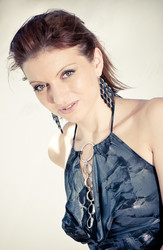
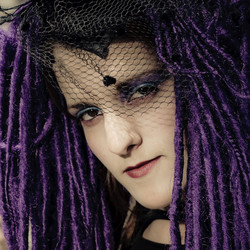
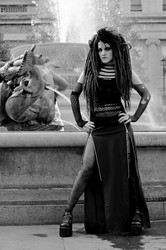
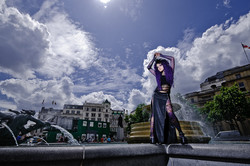


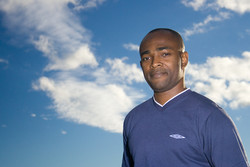
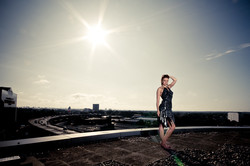

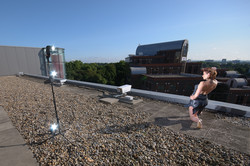
Comments
Taking a portrait on a bright sunny day
Thursday 30 July 2009 11:54:29 pm
Commented by Chris
You are the best
Wednesday 19 August 2009 9:08:13 pm
Commented by Yared
Great post! Nice website
Monday 01 March 2010 8:04:17 am
Commented by ralph
nature essays